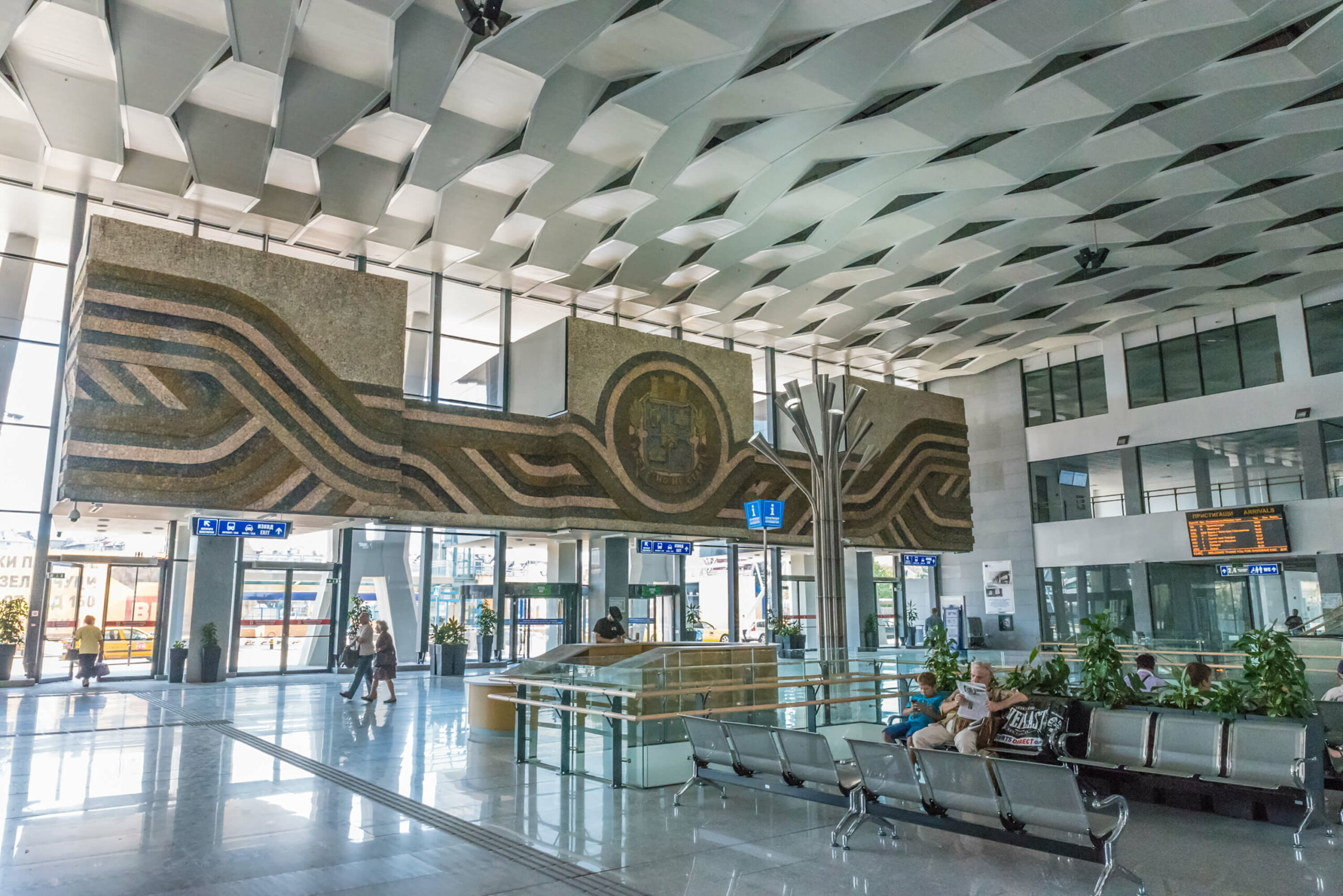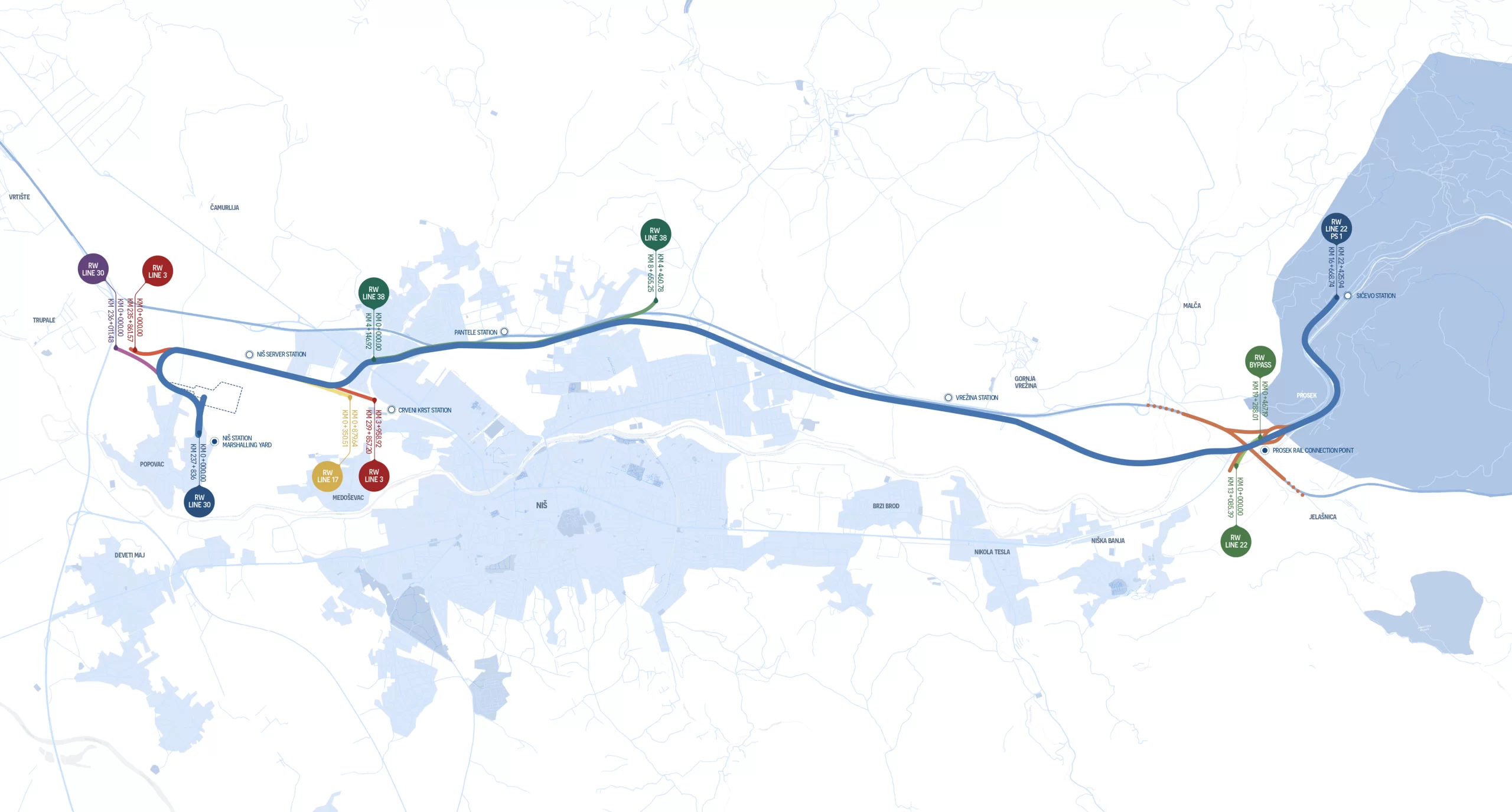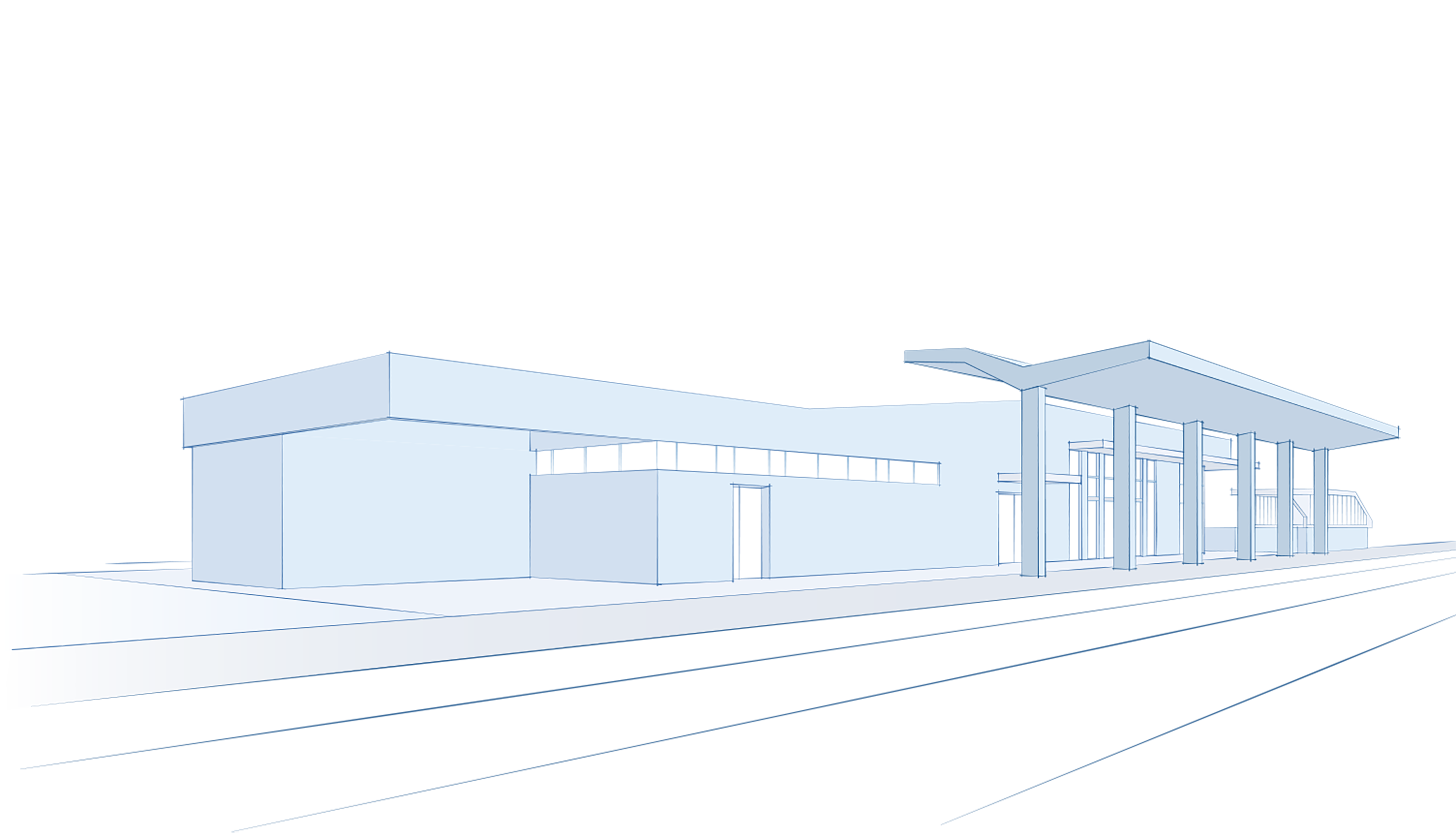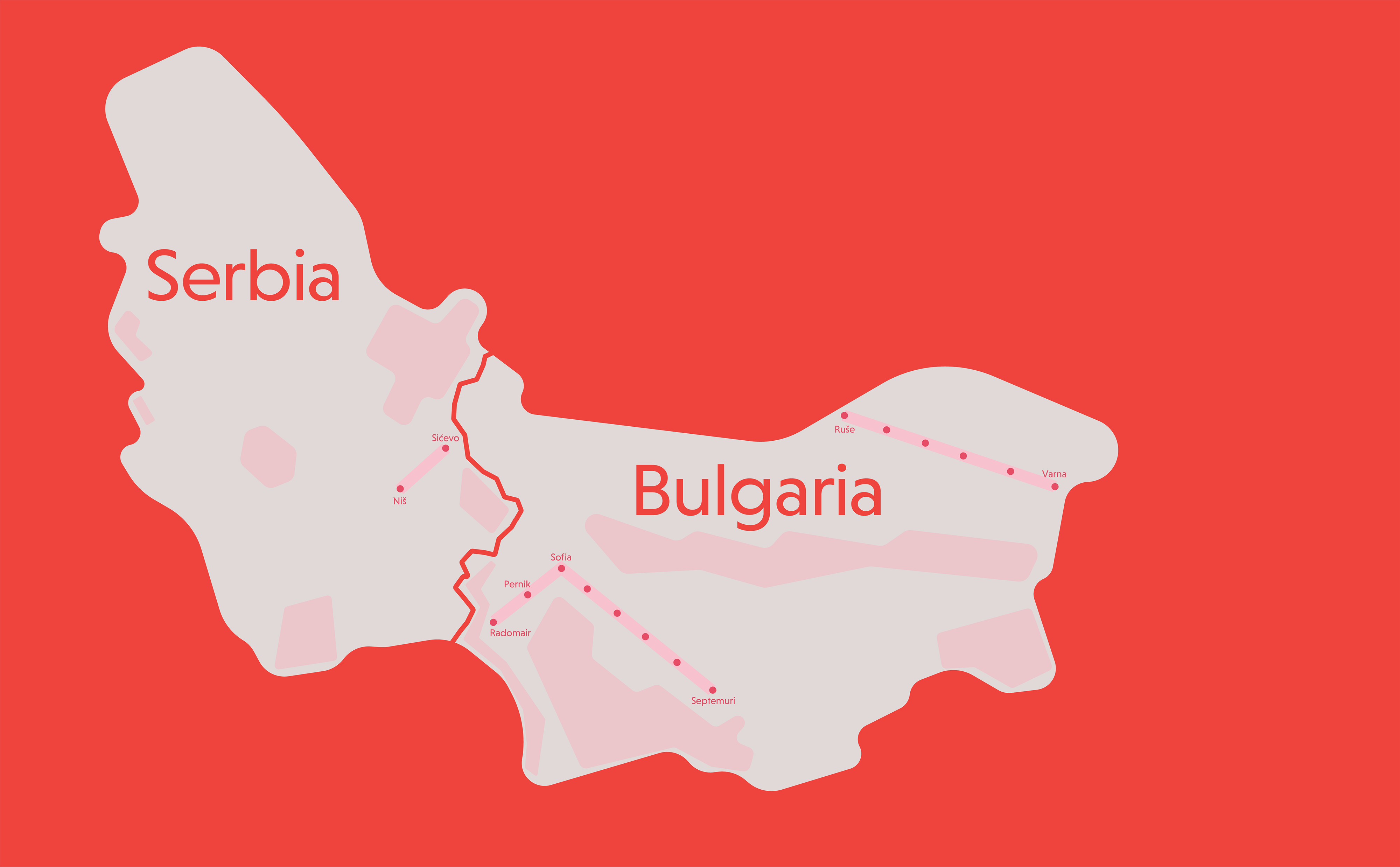Railways in the Balkan Area
Where the mobility routes meet.
The geographic area of the Balkans is particularly affected by new infrastructure that, for the railways, are part of the European Community programme for the development of a corridor system (Trans-European Network – Transport, TEN-T) able to make widespread connections between regions of the continent with highly varied technical and development features. In this context, NET Engineering was involved in the construction of competitive railway infrastructure for Bulgaria to enable the country to deal with the EU challenges relating to the development of an overall Trans-European transport network (railway, road, sea, river and air transport) aimed at ensuring the correct operation of the internal market and strengthening economic and social cohesion. A far from secondary aim for 2014-2020 was to obtain complete interoperability of the different transport corridors that will help to attract more goods traffic and develop an international passenger transport service in the Republic of Bulgaria. Looking to what has been done for the Serbian city Niš, on the border with Bulgaria, with a particularly complex situation concerning the railway route which unites the city with the Bulgarian border, provides an excellent guide.


The operations
NET Engineering was involved on three fronts in Bulgaria:
- The modernisation of the Sofia-Pernik-Radomir line;
- The modernisation of the Sofia-Plovdiv line – Sofia-Elin Pelin and Elin Pelin-Septemvri;
- The operational reactivation of the Ruse-Varna railway line.
The Sofia-Pernik-Radomir railway section is part of European Corridor 4 and is an essential section of the longitudinal route connecting Vidin, on the border with Rumania, the capital Sofia and the border with Greece. The project work concerned a series of operations to strengthen the functional conditions of the railway infrastructure (equipment, power supply network and civil infrastructure) for a section of about 40 km. In terms of local planning and design, the Sofia-Pernik-Radomir project had the absolutely new elements of a TBM-excavated double-barrel railway tunnel of about 5 km and steel bridges with a significant span. The tunnel, in particular, was accompanied by a significant, differentiated design of the safety and fire prevention systems respecting the legislative framework, international benchmarks and local regulations.
Another salient aspect of the project was the attention paid during both the analysis of the alternatives and the subsequent design stage to the reduction of the environmental impact of the infrastructure and the impact on the fabric of the existing settlement. Long stretches of the route are in urban contexts in the suburbs of Sofia and the industrial centre of Pernik.
In detail, the project sets out the creation of about 32.5 km of railway noise barriers localised and sized using a detailed acoustic forecasting model extended to an band of 1000 m around the new railway route to alleviate the noise caused by the operation of the line.
The work on the line introduced the changes necessary to allow railway services that satisfy the requisites for the TEN-T network. NET Engineering’s project is part of a wider investment programme which includes the creation of the Sofia-Dragoman railway and the railway hubs of Sofia and Burgas planned by the European Commission.
A similar enhancement operation is also in progress for the Sofia-Elin Pelin and Elin Pelin-Septemvri sections of the Sofia-Plovdiv line, which are part, respectively, of European Corridor 4 from Dresden/Nuremberg to Istanbul and Corridor 8 from Durazzo/Valona to Varna/Burgas. The modernisation was a priority of the operational programme for transport 2007-2013.
The existing Sofia-Septemvri railway line was already electrified for approximately 103 km. The consortium, led by NET Engineering, is providing the technical, administrative and procedural support on behalf of the customer in relation to the assignment of the technical design services and the construction work managed in six different work contracts. In the north-eastern area of Bulgaria, NET Engineering led the operational reactivation work of the Ruse-Varna line with an extension of about 230 km. This is strategically essential both nationally and at European level and the route will make transport fluid and effective on the railway line that is the shortest connection between the Black Sea area and bordering member states in Central and Eastern Europe, connecting Pan-European Corridors 7, 8 and 9. In detail, Ruse station is a leading railway hub for south-east Europe as it not only connects the Danube river port of the city to the sea port of Varna on the Black Sea but also manages the national connections with Sofia and Plovdiv and the international ones with Bucharest, Istanbul and Rumania.

NET Engineering in Serbia with the Nis Railway Loop
The Nis transport system had a problem of increasing traffic that the railway network of 2015 was no longer able to sustain because of its infrastructure limits. The city is crossed by 8 railway lines with more than 260 trains a day of which 68% are freight trains. This situation is very complex and constantly evolving – the traffic will increase by 57% by the end of 2020. Niš is also crossed by Corridor 10 of the TEN-T network made up of the international E-70 and E-85 lines connecting Paris with Istanbul and Budapest with Athens.
The lack of investment for the development of an adequate road and railway infrastructure network had led to 51 level crossings which caused traffic congestion that reduced the average speed of vehicles. All this translated into inefficient road and railway transport services and an increase in the ‘black spot’ critical points with an accident risk. Over time, this had a negative influence on the performance of the Serbian railway network, no longer competitive compared to other methods of transport (both freight and passenger). Further, considering the expansion of the city into areas near to the existing railway lines, space and functional conflicts had been generated with resulting negative effects on the environment and population.
The project developed by Net Engineering for the European Delegation to the Republic of Serbia set out the creation of a new railway loop around the city able to ensure greater efficiency of public transport and a consistent reduction of private traffic. The new railway bypass was designed to absorb all the freight traffic on one hand, to relieve the town centre of the current problems of congestion, noise and pollution, and, on the other, promote the high development potential of Niš and its neighbouring areas.

It was decided at the planning stage to examine alternative routes, including some outside the corridor set out in the planning documentation from Niš, so that the high construction costs caused by the importance of some of the works could be reduced.
Thus NET Engineering was called on to develop an alternative plan with fewer works which, as a result, was more economic. As the new route proposed was outside the planned corridor in its final part, Niš had to update the planning documents and submit the new design idea to the townspeople. Public engagement is a standard process in the Serbian Republic.
Round tables open to the public were conducted for the presentation of the new route. As a result of these, a design idea was outlined, and then created, that was shared and unanimously approved by the municipal administration and the townspeople.
Prior to the assignment of the work, the design process had been suspended several times due to significant disagreement between Niš and the Serbian railways; over the years, this had caused the interruption of the project. The presence of NET Engineering and the other companies involved enabled constructive talks to begin between the disputing parties and a shared choice to be reached approved by both the administration and the railways.

